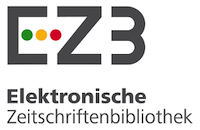Business productivity and inclusion of people with disability: challenges and opportunities
Productividad empresarial e inclusión de personas con discapacidad: desafíos y oportunidades
##plugins.themes.bootstrap3.article.main##
The word 'productivity' is often perceived as a determining factor in any business discourse. Traditionally, productivity has been associated only with financial indicators, which poses a challenge when relating this concept to the inclusion of people with disabilities. This is due to the common belief that people with disabilities cannot perform efficiently, since they must have different schedules than other employees and at the same time require reinforced job stability. In fact, it is possible that none of this arouses astonishment and worries the various sectors of the economy (especially micro, small and medium-sized companies) because many organizations consider inclusion as a possibility only for large companies in the that the disabled worker is not notable in his performance. Despite this, there are organizations that have turned inclusion into an opportunity to contribute to sustainability and decent work; Therefore, they improve work environments in such a profound way that people—both with and without disabilities—find fewer disabling barriers to their full development.
Downloads
##plugins.themes.bootstrap3.article.details##
Deloitte. (2019). Transitioning to the Future of Work and the Workplace Embracing Digital Culture, Tools, and Approaches. Recuperado de https:// www2.deloitte.com/content/dam/Deloitte/us/ Documents/human-capital/us-human-capitaltransitioning- to-the-future-of-work.pdf.
Gustafsson, J., Peralta, J.P. and Danermark, B. (2014). The employer's perspective: Employment of people with disabilities in wage subsidized employments. Scandinavian Journal of Disability Research, 16(3), 249-266. DOI: https://doi.org/10.1080/15017419.2013.785976
https://doi.org/10.1080/15017419.2013.785976
Henneborn, L. (2023). Designing Generative AI to Work for People with Disabilities. Harvard Business Review. Recuperado de https://hbr.org/2023/08/ designing-generative-ai-to-work-for-people-withdisabilities.
Morales, J.M. (2022). Medidas empresariales de diversidad e inclusión para el colectivo LGTBI: un análisis jurídico laboral. Revista Latinoamericana de Derecho Social, 1(34e), 219-256.
OIT. (2003). La hora de la igualdad en el trabajo. Informe global presentado en virtud del seguimiento de la Declaración de la OIT relativa a los principios y derechos fundamentales en el trabajo. Ginebra, Suiza: OIT.
Ramachandra, S. et al. (2017). Factors influencing employment and employability for persons with disability: Insights from a City in South India. Indian Journal of Occupational and Environmental Medicine, 21(1), 36-41. DOI: https://doi.org/10.4103/ijoem.IJOEM_44_16
https://doi.org/10.4103/ijoem.IJOEM_44_16
Victoria, J. (2013). El modelo social de la discapacidad: una cuestión de derechos humanos. Boletín mexicano de derecho comparado, 46(138), 1093- 1109. DOI: https://doi.org/10.1016/S0041-8633(13)71162-1



































